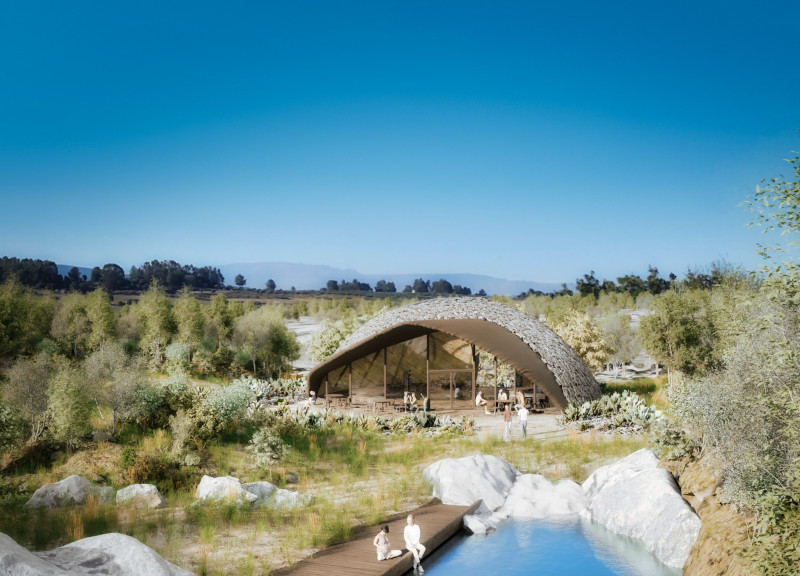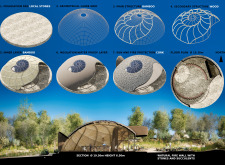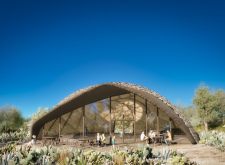5 key facts about this project
The NAUTILUS project presents a thoughtful approach to design that emphasizes sustainability and a connection to the natural environment. Located in a scenic setting, it features a circular structure that promotes open spaces and encourages social interaction. The overall concept focuses on using materials and design strategies that are environmentally responsible and suitable for the local context.
Foundation and Structure
The building rests on a foundation made of local stones, which solidifies its presence within the landscape. This choice of materials highlights the importance of regional resources, contributing to the overall durability of the structure. The primary framework of the building is constructed from bamboo, a lightweight material that allows for generous interior spaces without relying on heavy supports. Bamboo grows quickly, making it an eco-friendly option.
Material Layers
A secondary layer constructed from wood adds warmth and a welcoming touch to the design. This wood layer complements the bamboo and enriches the overall tactile experience of the space. An additional inner layer of bamboo reinforces the visual continuity and can also improve thermal comfort and sound quality. The inclusion of insulation and a water-proof barrier ensures that the building remains protected from environmental factors, addressing moisture concerns effectively.
Design Features
The circular floor plan, measuring 19.30 meters in diameter, creates a layout that encourages flow and interaction among occupants. The height of 6.50 meters contributes to a spacious feeling while allowing natural light to brighten the interior. A distinguishing feature of the design is the natural fire wall made from stones and succulents. This element serves a practical purpose while introducing a lush aesthetic, reflecting a deeper connection to nature.
The design of NAUTILUS integrates various components that enhance functionality and environmental awareness. This results in a structure that is both practical and harmonious with its surroundings, offering a thoughtful response to contemporary architectural challenges.






















































